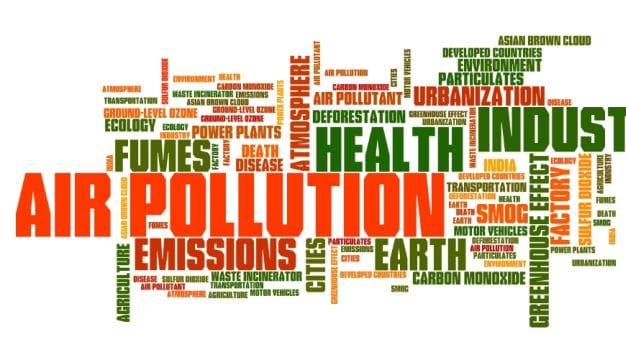
Numbers don’t affect us.
World Health Organisation conducted a survey a few months back and concluded that Delhi is the most polluted city in the world. Delhi air recorded an annual average of 153 micrograms of the most dangerous small particulates, known as PM 2.5s, per cubic metre. This should have made us sit up and take notice. It didn’t.
Recent reports showed that Beijing and Delhi were neck to neck in air pollution levels and an emergency-like situation was declared in Beijing. Back in India, we let that pass too. The Delhi Government offered ideas on how to reduce vehicular pollution and road congestion. We debated about it on social media, unconvinced.
The headlines scream that air pollution causes 30,000 deaths in Delhi annually. We raise our eyebrows but remain largely unaffected. It is but a mere drop in the ocean, right?
But last night was the sixth night in a row that my daughter couldn’t sleep due to a racking cough triggered by air-borne allergies. She has not had a cough-free day for the past 2 months. A word with her class teacher tells me that this is now a common phenomenon with children growing up in NCR. A study stated that half of Delhi’s 4.4 million schoolchildren would never recover full lung capacity. Never recover full lung capacity. Take a minute to think about that.
We must sit up and take notice now.
The Indian Scenario
There is not tomorrow to postpone this to. Our children are suffering. Experts and doctors alike are unanimous in blaming the increasing cases of respiratory issues in children on unprecedented decline in air quality across India. India’s National Health Profile 2015 noted that last year had 3.5million reported cases of acute respiratory infection (ARI), a substantial 140,000 increase on the previous year and a shocking 30% increase since 2010. Counter arguments may be laid to rest with the confirmation that this meteoric rise has happened despite notable improvements in medical care and greater focus on nutrition and a gradual shift away from using wood as fuel in rural India.
So, it can be clearly seen that air pollution is no more about just numbers. It is a reality which is affecting our health and that of our future generations. And though pollution levels are astronomical in Delhi, other cities like Mumbai are not too far behind either. It is perhaps no surprise that India has 13 of the 20 most polluted cities in the world, a statistic we should be very worried about.
Steps You Can Take to Combat Air Pollution
What can we do, you ask? Plenty. Keeping policy changes aside, many changes in our every day life can help us deal with this reality and take steps to shield our family’s health. There are natural ways in which we can clean our indoor air. Effective and good for the environment, these are must dos. For families who want to go a step further, a range of air purifiers are available in the market today.
Recommended Dietary and Changes
Further, one can also strengthen inner defenses against the pollution. Dr. Rupali Dutta, Chief Clinical Nutritionist at Fortis-Escorts Hospital, tells us how. “When the human body is exposed to polluted air, there is an increase in the formation of free radicals which are known to degrade normal healthy tissues. To protect oneself, foods that are antioxidant rich should be consumed adequately”, she advises. “These include all the fruits and vegetables, especially those rich in Vitamin A & Vitamin C”.
Vitamin A – Fruits and vegetables that are yellow, orange and green are rich source of carotenoids, which are converted into Vitamin A in the body.
Vitamin C rich foods include citrus fruits, lemon, guava, amla and certain vegetables like tomato and tomato juice, Brussels sprouts and broccoli.
Easier said than done. Fussy eaters that some children are, getting them to eat all this may be a challenge. To get children to include at least 5 servings of fruits and vegetables, you will have to innovate. Carrots and spinach can be pureed and added to the roti atta, or the good old gajar halwa. Green chutney is another way of adding greens to your child’s food. Though whole fruits are better, fresh orange juice can also be used. Amla or spinach could be cooked along with your daily dal or mashed into gravies. Room temperature nimbu pani as soon as they get back from school would be a good idea.
Dr. Rupali also suggests that there is a study that shows olive oil to be protective against damages due to air pollution. One dish of your daily meal can be made in olive oil.
Should your child play outdoors in this air-situation?
Dr.Vivek Nangia, HOD and Director Pulmonology, Medical ICU &Sleep medicine, Fortis Hospital Vasant Kunj, Delhi, suggests that we take it a day at a time. He says “Parents can check the air quality index, if it is more than 200, keep the children indoors as far as possible, especially those suffering from asthma or respiratory allergies. Smog conditions are also not conducive to outdoor activities. However, once there is bright sunshine, outdoors is where the children should be”. As current levels in Delhi are hovering at a ‘hazardous’ 500-999, it is best to keep children indoor and ensure you use a mask whenever anyone steps out.
[“source-ndtv”]










